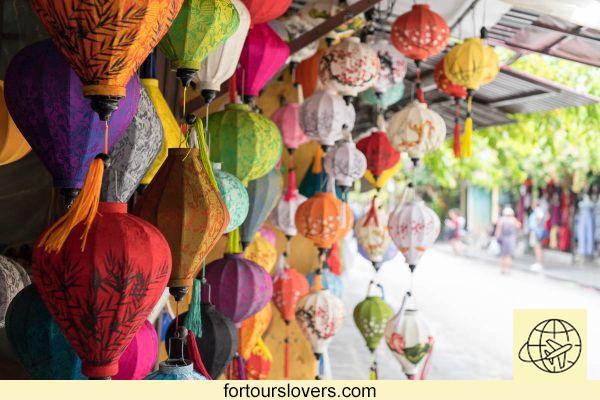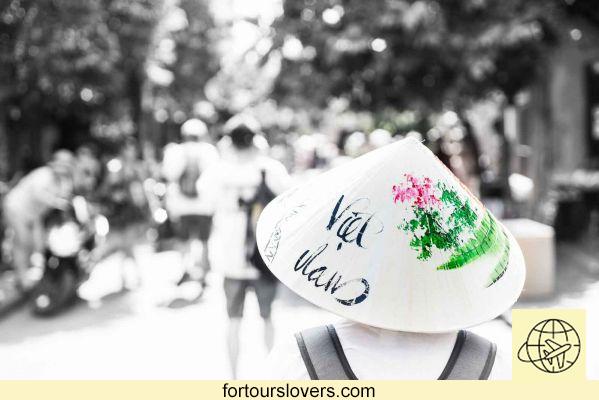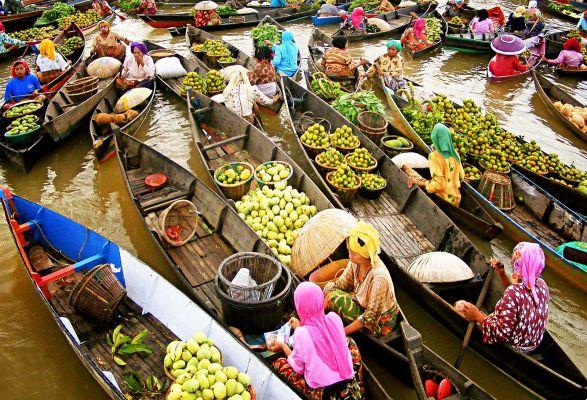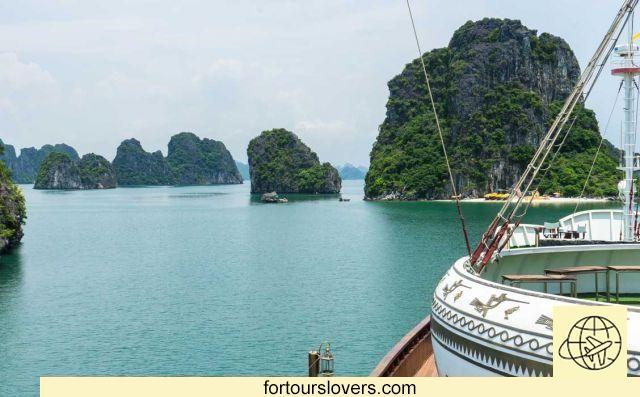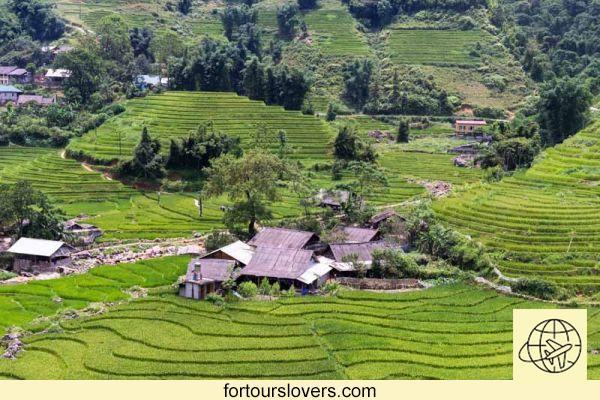
Sapa: a commercial Vietnam?
The treks in the rice fields and landscapes are beautiful and worth all the money night train trip to Sapa but ... yes there is a but ... there is something in Sapa that hangs in the air and that I don't like. That something that makes you seem to be in a movie set where everyone plays their part and you are that extra who arrived almost by chance who has to recite a little piece and then go back to where it came from.
Translated in a nutshell: Sapa has been and is currently invaded by tourism, this has changed the balance for which it had become so attractive. It still is, let's understand, but the tourist or traveler must pay much more attention than before in order not to run into bad highly touristy experiences.
But let's get to the point, to my advice and to what you can do in Sapa, a part of Vietnam that I believe still has appeal and it is right to visit with due care. Alternatively, after reading this post, I invite you to look for information about the Hà Giang province (also north of Vietnam) which could be even more interesting if you are looking for something original.
You are planning a trip to Vietnam, you may be interested in these articles of mine:
- Travel to Vietnam: my detailed itinerary
- My 10 tips for DIY travel to Vietnam
Why visit the surroundings of Sapa?
Sapa is one of the Vietnamese kingdoms of rice terraces. Endless expanses of rice fields they support thousands of people which are part of the indigenous communities of Vietnam. Ethnic minorities, each with its own physiognomy and cultural nuance
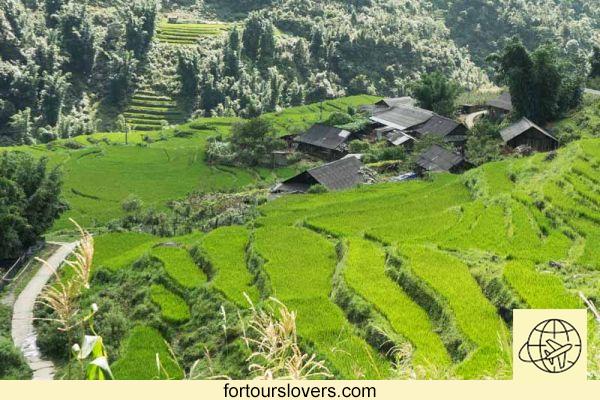
Rice terraces are key. Each family collects kilos and kilos of rice which are then crammed to be consumed throughout the year. As you know in Vietnam, rice is a widely used food; it represents the ideal accompaniment for any dish. Cooked overcooked, even rather bland, we could say it has the same importance of bread on our tables.
Sapa is not just fantastic landscapes nestled in the mountains, Sapa is also where ethnic minorities mix, each with its own characteristics. You will be struck when, walking along the paths, you will meet the different ethnic groups.
Remember that the best time to visit Sapa is between March and May; between June and August temperatures are high and strong showers and therefore muddy paths are possible. Between September and November you will have the great opportunity to see the terraces tending to yellow, ready to be cut from September itself. The period from December to February because of the mists and the cold.
How to get to Sapa
There are several ways to reach this area of northern Vietnam.
The most used are:
- Train from Hanoi to Lao Cai with transfer by Mini Bus to Sapa (about 8/9 hours total) - Read also: The train from Hanoi to Sapa (Lao Cai)
- Night or day buses which take you directly to Sapa from Hanoi (about 5 hours)
Despite in other trips to Asia, such as the one in Thailand, I moved with night buses, in this case I preferred to use the train.
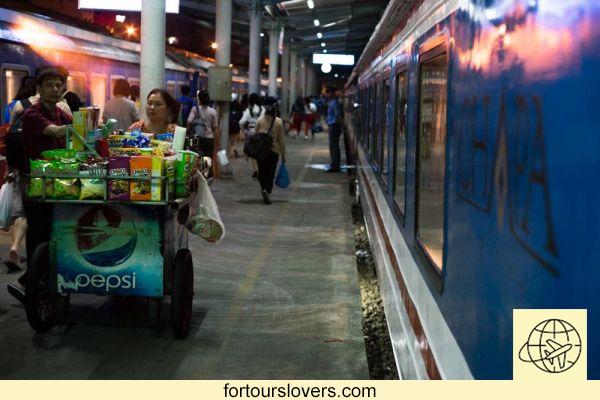
I will explain how it works in a specific article. Know that it is an experience to do and I like to recommend it. I used one 4-bed vip berth and I must say it was very clean, no suspicious animals or insects on board.
The train to Sapa is characteristic, certainly not the best way to spend the night and arrive in Lao Cai rested, but for once it can be done.
The choice fell on the train because, reading on the internet, they advised against night buses due to the recklessness of the Vietnamese drivers. I discarded the daytime bus because it would have made me lose precious hours of travel.
What to do in Sapa city?
Sapa city is ugly! Let's take it for granted.
Don't think about staying in Sapa hoping to see something beautiful in the city. Sapa is fine for a night's rest like in my case, no more.
To tell the truth, there is a second hypothesis, namely that you stay in Sapa to go in the day to visit the Fansipan with the beautiful cable car that takes you to the top. (CLICK HERE to buy the ticket for the Fansipan, including pickup service) This was my dream that was back in the drawer the same day due to bad weather. Impossible to go to the top of the Fansipan.
That said, Sapa is a hodgepodge of hotels under construction and shops that come with low-cost branded hiking clothing and backpacks. I don't think they are original but they are still well made and for what they cost you can also risk it. For 15 euros I bought a 30-liter technical backpack.
Where to eat and sleep in Sapa?
Although the city is bad, I found a wonderful restaurant and hotel that I do not fail to recommend.
To sleep I suggest the Sapa Elegance Hotel . Slightly out of the way from the center but very clean and with a very cheap laundry service. The rooms are huge and for the price paid it really deserves it.
If you want to search other solutions to sleep in Sapa, take a look here .
For the restaurant I suggest instead the The Hill Station Signature Restaurant, not far from the city center, can be reached on foot. An elegant restaurant with typical dishes at a ridiculously low price.
Excursions to the villages of Sapa
Many travelers, indeed almost all, go to Sapa to be able to trek inside nature and combine culture and natural aspects. Here I will explain my experience and give you all the appropriate advice.
What trekking to choose in the mountains of Sapa?
You will be spoiled for choice! THE trekking in Sapa they are of various kinds, they go from those within the day to those lasting several days. The longer ones include 5 days and 4 nights.
The longer the days, the greater the kilometers on the more or less muddy paths between the ethnic villages of Sapa.
Which trekking to choose is a subjective decision, it depends on:
- How and to what extent are you trained for efforts.
- How much time do you want to spend in the rice fields.
- How much time of the whole itinerary do you have to dedicate to us.
THEitinerary in Vietnam that I had prepared did not allow me to spend too many days in the mountains. My choice fell on trekking for 2 days and 1 night which I believe is the right solution to better enjoy Sapa and its surroundings.
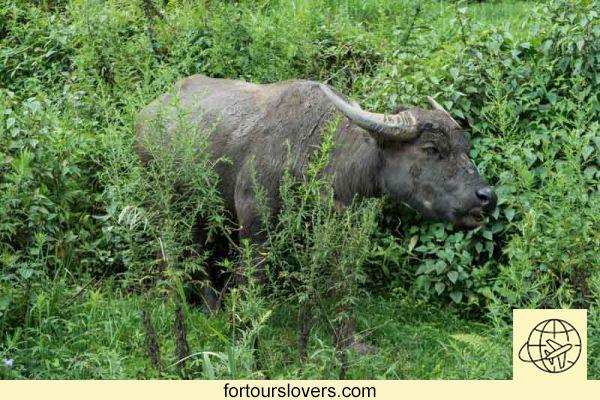
I chose a mixed path between nature and ethnic villages in order to make a nice mix between culture and natural aspects.
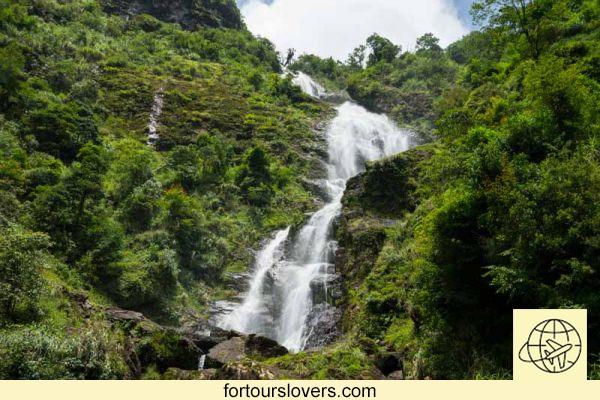
As for the prices, they vary according to the number of days. In my case the excursion cost a total $ 139 per person:
- dollars 63 for 2 days and 1 night trekking.
- dollars 70 for round-trip train ticket from Hanoi ($ 35 each way).
- dollars 6 for the return ticket by minivan from Lao Cai to Sapa.
How is the 2 days and 1 night homestay trek?
The first day we leave at about 9 from the agencies. You will probably have arrived directly from Lao Cai by bus after the overnight train ride, so you will already be at the agency (as long as you want to do it with an agency).
You spend a whole day between the views of Sapa and the night yes sleeps in a traditional homestay where, theoretically, there should be a cultural exchange between you and the host families. The next day the trekking continues with a stop for lunch and everything ends around 15/16 in the afternoon. Meals are included in the price paid for the trek.
The two days will not be easy with the sun, imagine if it were to rain. You will be quite tired.
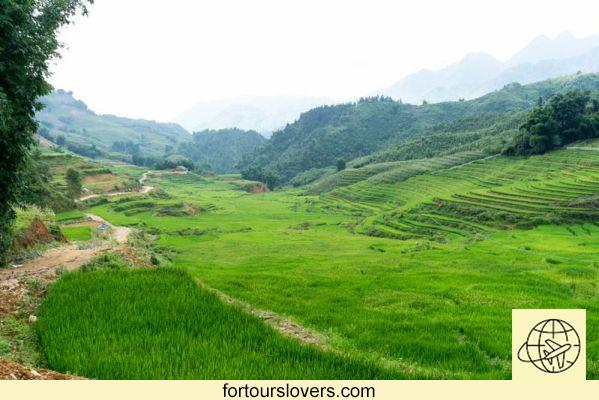
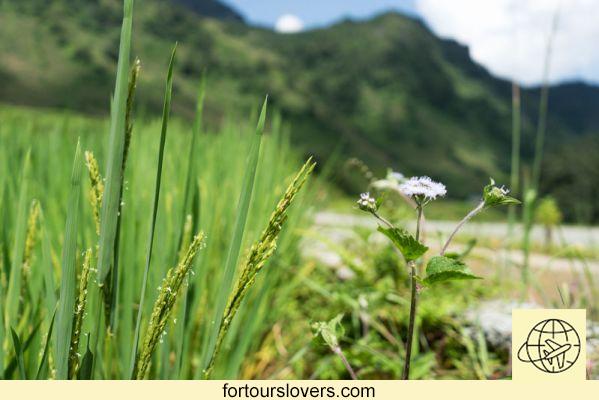
For this reason, imagining it already in the construction phase of the itinerary, I preferred add a night in Sapa city. Perfect solution as it allowed me to also use the laundry service of the hotel where I was staying. After a mud trek it was absolutely necessary.
In any case, when outlining the itinerary, regardless of the duration of the trek, know that you have two choices:
- Sleeping one more night in Sapa city and take the minibus to Lao Cai the next day at 17.00pm
- After the trekking go directly to the agency to wait for the minibus for Lao Cai to be able to take the evening train to Hanoi.
Excursion alone or with an agency?
I also asked myself this question before leaving for Vietnam. I talked to several people who have been to Sapa before me and some told me they were able to do the various hikes independently.
From my point of view it would be better to follow them in the company of a guide. Assuming that they are inclined to exchange and speak good English, you will have the opportunity to better understand the customs and culture of the various ethnic groups.
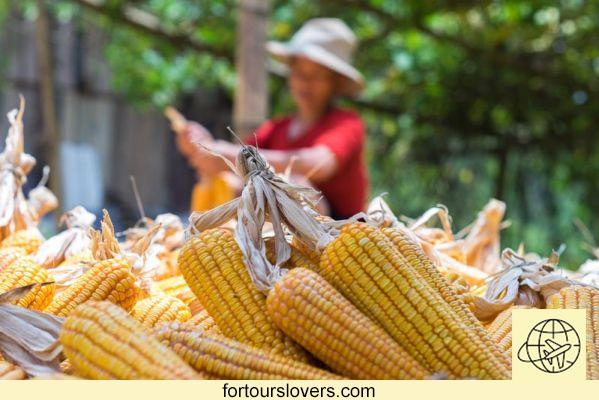
Nothing prevents you from doing it alone but the advice is to use local guides.
Council: if you choose to have your experience in Sapa with an agency, try to use an agency that seeks to reinvest part of the profits by supporting local communities and thus promoting ethical tourism.
Tip # 2: choose between one of these tours operated by GetYourGuide , it will also help you with the booking part.
What to watch out for when choosing trekking with agencies?
Sapa is chock full of places for you to choose excursions. I therefore recommend that you:
- Plan and book the experience before arriving in Vietnam
- Buy train tickets through the agency thus avoiding using other booking portals for night trains.
Regardless of whether you book it before or whether the choice is on site, my advice is to request:
- A guide who speaks fluent or at least understandable English: it affects your general perception. Not that my English is a native speaker but if the guide speaks poor English it will be difficult to understand what he is saying and therefore live the experience to the fullest. So if possible ask for a guide with good English.
- A traditional and true Homestay: it seems a counter-current request but it is so. You wonder ... how is it possible that a homestay in the mountains of Sapa is not authentic? Well, even I was pretty convinced it couldn't happen, and instead I found out that it really is, or at least it was in my case.
It would be nice to always be able to say that everything is beautiful, everything is fantastic, but traveling is not always the case. Be wary of those who "sell" everything to you as a superb "wow". Sometimes you run into situations that you don't want to be.
I don't want to make it too long but Sapa, and especially the village of Cat Cat, has developed a certain modus operandi typical of mass tourism and you could risk finding yourself in a homestay where the owners see tourism as a strong source of income to be exploited to the maximum. I found myself in a homestay where it was evident that they didn't want to share, talk or explain their life and experiences to me. Therefore, I advise you to indicate already at the time of booking to require a homestay in which there is the will and the true interest in a cultural contamination. It will affect your perception of Sapa.
Recommended clothing for hiking in Sapa
Aside from the city, the ethnic villages of Sapa are scattered among the mountains. During the trek you will pass from one village to another through paths that will easily be muddy and slippery. Even if you are in a dry period, there will certainly be jungle passages that will be wet. On the other hand you will be in the mountains and along the about 30 kilometers that you will have to travel (total kilometers in the two days) it is impossible to find everything dry, also because it rains often and willingly in Sapa.
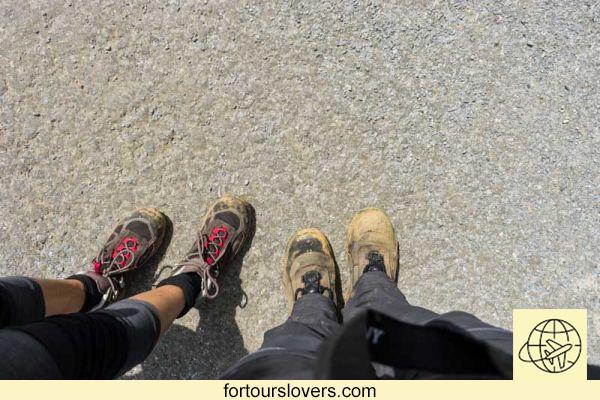
The recommended clothing is therefore what you would use for an excursion in the local mountains:
- Technical / synthetic clothing so that they can dry easily in case of rain.
- Goretex shoes or boots to avoid getting your feet wet.
- K-Way necessary in case of rain.
- An umbrella of the resealable ones, in this case it will not be used for the rain but to cover yourself from the sun along the way.
- Spare parts based on the number of trekking days.
Remember this post… when you see the women of the H'Mong and Red Dao tribes who, without the slightest difficulty, will pass in impossible places using simple plastic slippers.
It may seem strange but those slippers have an extraordinary grip, a little uncomfortable but it's like having crampons. Seeing is believing!
Anyway, jokes aside, I strongly advise you to leave with the right clothing.





